Taxus baccata L.
Yew tree, English yew (also Irish yew and golden yew)
The tree tag number relates to the black tree-maintenance tags, usually fixed on the trunk, 2 to 3m above ground level.
The yew tree is one of the three conifers native to Ireland (the others are Scot’s pine and juniper). Three forms of yew are represented in the Belfast Botanic Gardens: the wild form, the ‘Irish’ form, and a golden form. The wild form has a spreading shape and is usually a much lobed stem. Today, yews are seldom seen more than 7-8m high, but the species is capable of forming a substantial forest tree. Fossil remains of large yews are found in the bogs of central Ireland dating from a time 6000 to 8000 years ago, when yew formed a significant component of the native forests. Wild yews are hard to find in the north of Ireland now, but take the scenic road to the Marble Arch Caves in Fermanagh and you will pass some close to the road. It was in this limestone area that two unusual yews with an upright or fastigiate shape were found in 1780. They were transplanted to the Florencecourt estate a few miles away where one survived and was named the Irish Yew. The original tree still grows there and the Irish yews cultivated all over the world have originated from this plant. Several golden forms have arisen in cultivation.
There are a number of native yews in the Botanic Gardens, for example, on the main path from the Stranmillis Road gate. The Golden yews and the best examples of the Irish Yews are on the grass in front of the Palm House.

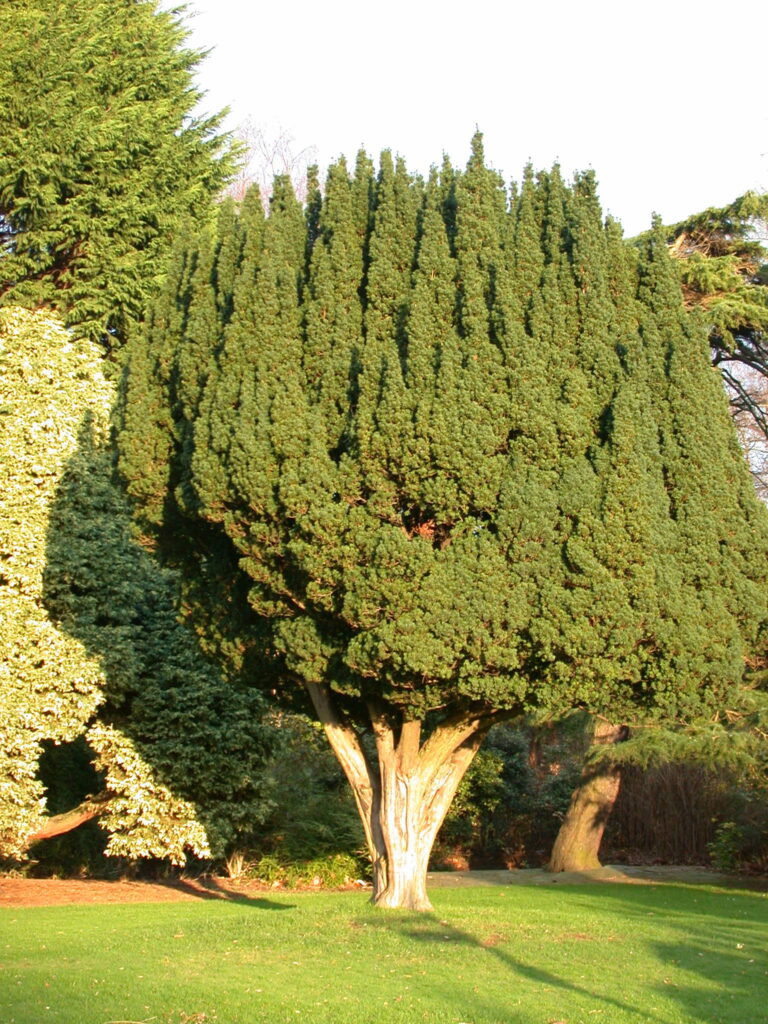

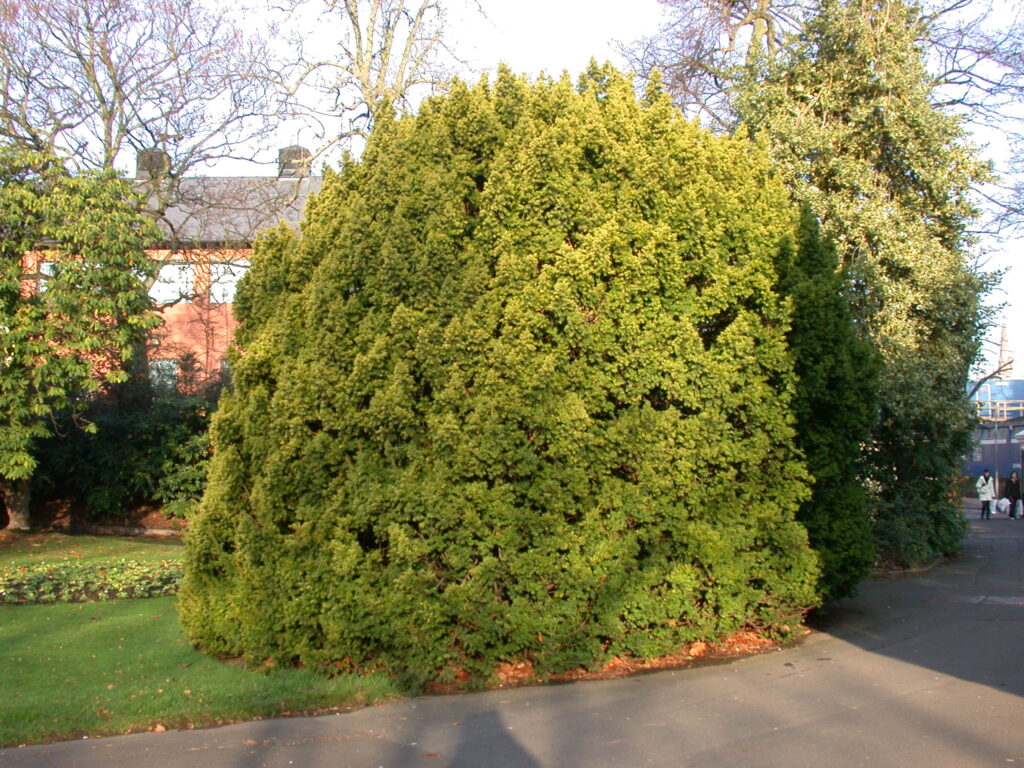

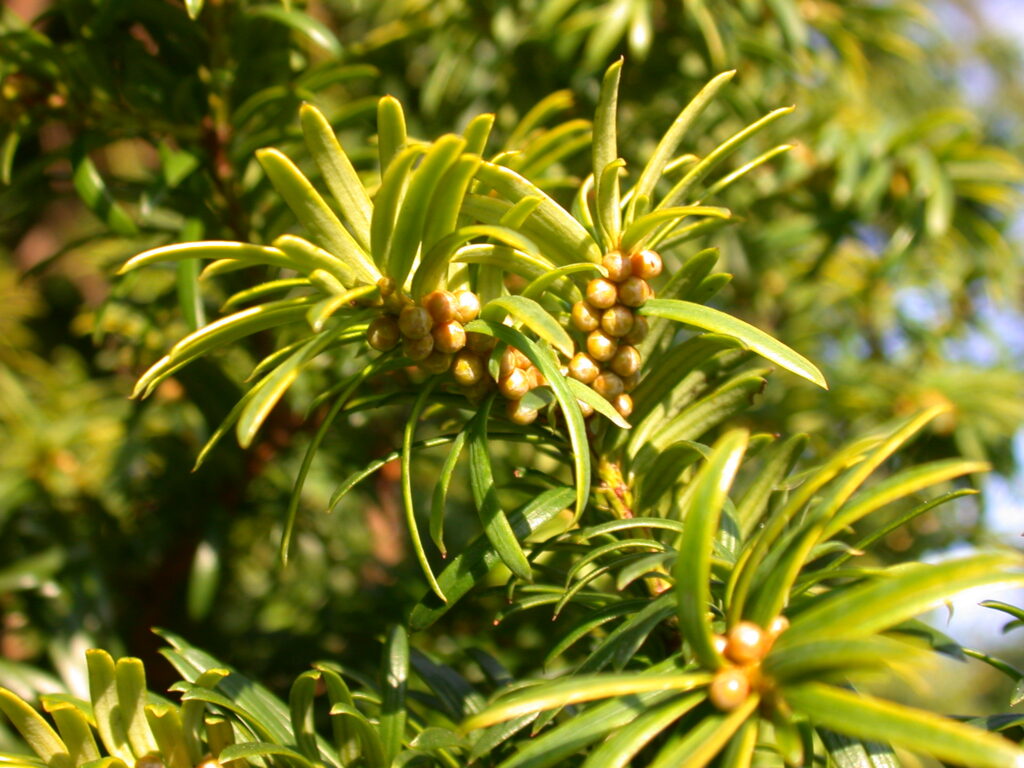
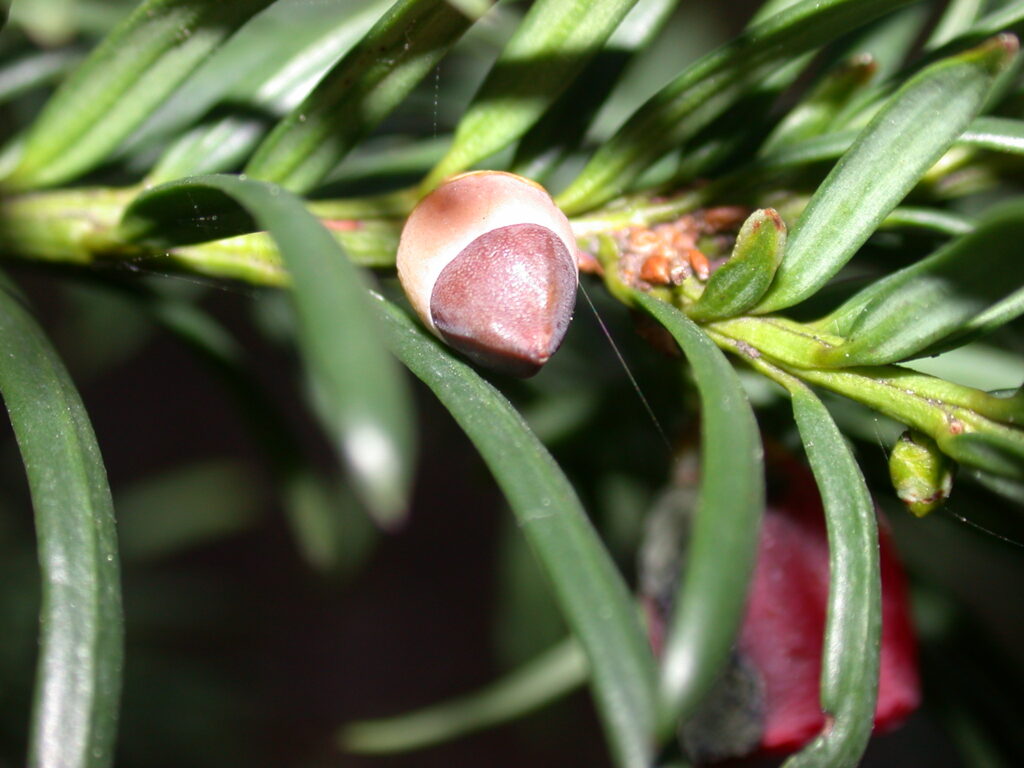
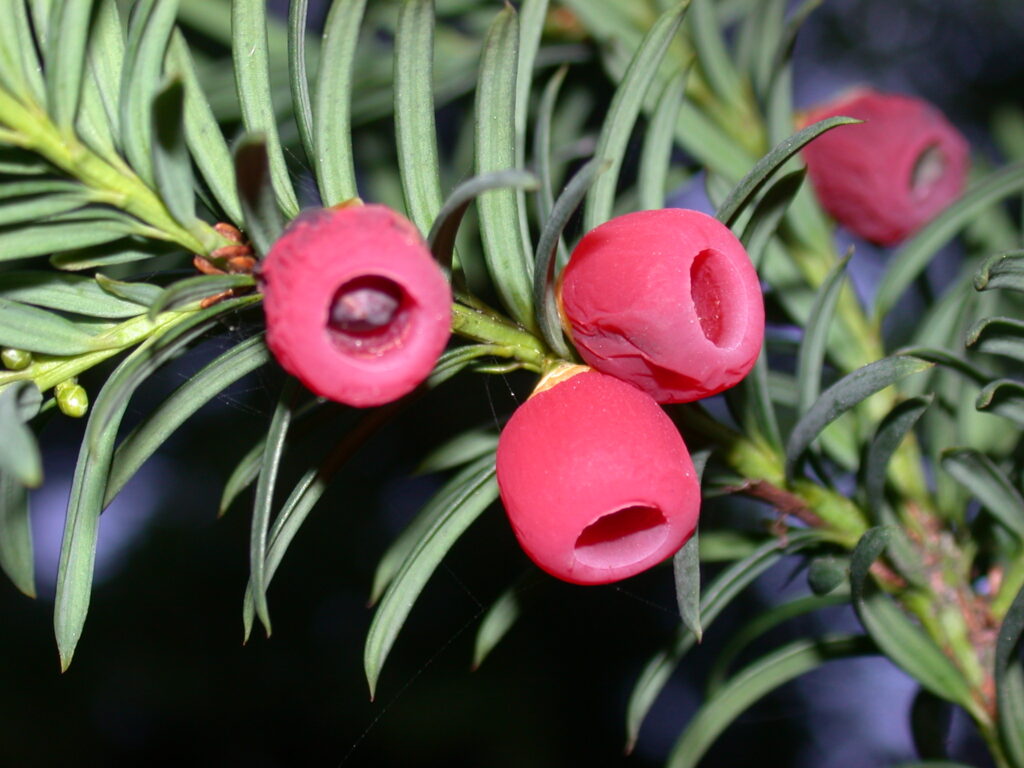
Photos taken in Belfast Botanic Gardens in 2009. Copyright: Friends of Belfast Botanic Gardens.
